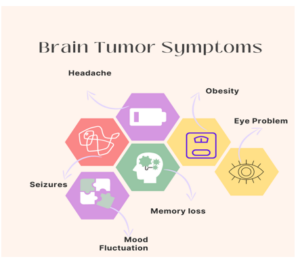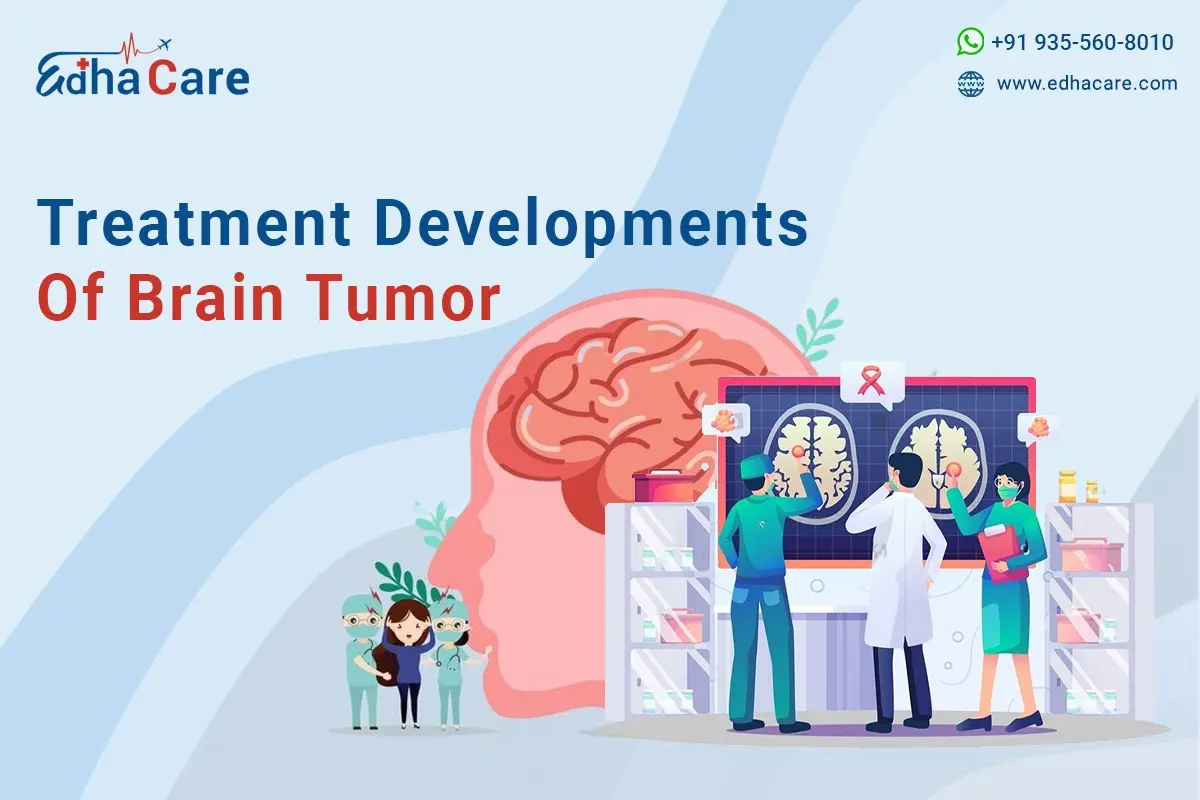One of the most prevalent diseases in existence today is the brain tumour. In 2020, the Central Brain Tumour Registry of the United States (CBTRUS) predicted that there will be about 86,970 new instances of primary brain and central nervous system (CNS) tumours detected in the country. These figures cover both cancerous and benign brain tumours. The kind, size, location, and patient’s general health of the tumour all affect the treatment options for brain tumours. According to each patient’s unique demands, the treatment strategy may combine surgery, radiation therapy, chemotherapy, targeted therapy, and immunotherapy. There are now better brain tumour diagnostic tools, surgical methods, and treatment choices because to developments in medical technology and research.
Types of Brain Tumor
1. Primary– Our brain is where primary brain tumours start. They can arise from your nerve cells, brain cells, meninges, the membranes that surround your brain, and glands like the pituitary and pineal. Primary tumours can be malignant or benign. Gliomas and meningiomas are the most prevalent kinds of brain tumours in adults.
2. Gliomas– Gliomas are tumors that develop from glial cells. These cells normally support the structure of your central nervous system, provide nutrition to your central nervous system, clean cellular waste, break down dead neurons
3. Meningioma– Meningioma is the most common primary brain tumor, accounting for more than 30% of all brain tumors. Meningiomas originate in the meninges, the outer three layers of tissue that cover and protect the brain just under the skull. Women are diagnosed with meningiomas more often than men
4. Neurofibroma– Neurofibromas are benign tumours that can develop on any part of the body’s nerves and are often painless. These fleshy, soft growths can occasionally form on the spinal cord, cranial nerves, or the brain. Neurofibromatosis type 1 (NF1) is a hereditary condition characterised by many neurofibromas as one of its symptoms.
5. Giant Cell Tumor– Named for their extremely large cells, giant cell tumors are rare bone tumors that usually affect the leg and arm bones. They may also be found in the skull. Most giant cell tumors are benign and occur in patients between 20 and 40 years of age.
6. Osteoma– Osteomas are benign bone tumours that typically appear on the base of the skull and the bones of the face. These slowly expanding tumours typically don’t manifest any symptoms. Large osteomas, however, may result in issues with breathing, vision, or hearing if they develop in specific regions of the brain.
Symptoms of a Brain Tumor
Symptoms of brain tumors generally depend on the location and size of the tumor. Some tumors cause direct damage by invading brain tissue while some of the tumors cause pressure on the surrounding brain.

Management of Brain Tumor
There are numerous therapeutic modalities connected to brain tumours. Surgery is the most typical treatment for cancerous brain tumours. The objective is to eliminate as much of the cancer as possible without harming the brain’s healthy areas. Chemotherapy and radiation therapy are two examples of additional treatments that can be coupled with surgery. You can recover from neurosurgery with the aid of physical therapy, occupational therapy, and speech therapy. Researchers from UCLA and other institutions across the world have demonstrated that a new targeted therapy medicine can prolong the time that patients with a certain subtype of glioma get treatment without their condition getting worse. The discovery raises the possibility of a novel therapeutic approach for sufferers of the lethal but slow-growing brain tumour.
Palliative and Supportive Care
There are additional types of treatments besides just these clinical ones, such as supportive and palliative care. By controlling symptoms and assisting patients and their families with additional, non-medical needs, palliative and supportive care aims to improve how you feel while receiving treatment. This kind of care is available to everybody, regardless of age or tumour kind or stage. And it frequently works best when therapy is initiated as soon as a brain tumour is discovered. People who receive palliative and supportive care in addition to tumour therapy frequently experience less severe symptoms, have a higher quality of life, and are more happy with their care overall. There are many different types of palliative care, and these care options frequently involve medication, dietary adjustments, relaxation exercises, emotional and spiritual support, and other therapies. To alleviate symptoms, you might also receive palliative therapies like chemotherapy, surgery, or radiation therapy. Some brain tumour symptoms can be extremely severe and have a significant negative influence on both the patients’ and their family carers’ daily life. However, the usage of specific drugs can frequently be used to control a variety of symptoms.
Radiation Therapy
In radiation therapy for brain tumors, medical professionals use strong energy beams to kill tumor cells. Radiation therapy can treat both benign and malignant brain tumors. Medical professionals often administer external beam radiation therapy in brief sessions per day. A standard treatment schedule may involve administering radiation treatments five days a week for two to six weeks. Radiation therapy typically uses X-rays, however a more recent kind of this therapy uses the energy from protons. It is possible to more precisely aim the proton beams to exclusively harm the tumour cells. The type and dose of radiation you get will determine the side effects of radiation therapy for brain tumours. Fatigue, headaches, memory loss, scalp irritation, and hair loss are frequent adverse effects that occur during or immediately following treatment.
Radiosurgery
For brain tumours, stereotactic radiosurgery is a rigorous radiation therapy. It directs radiation beams at the brain tumour from a variety of angles. Radiosurgery is a treatment option for both benign and cancerous brain tumors. Doctors employ various technologies, including linear accelerator radiosurgery, gamma knife, proton therapy, and others, to deliver radiation and treat brain tumors. Radiosurgery is typically completed either in a single session or a series of procedures. Feeling extremely exhausted and experiencing skin changes on your scalp are side effects of radiosurgery.
Chemotherapy
Strong drugs are used in brain tumour chemotherapy to kill tumour cells. Chemotherapy drugs can be ingested orally or intravenously. The type and dosage of medications you take during chemotherapy affect the adverse effects. Chemotherapy may result in hair loss, nausea, and vomiting.
Targeted Therapy
Targeted therapy for brain tumors uses medicines that attack specific chemicals present within the tumor cells. By blocking these chemicals, targeted treatments can cause tumor cells to die. Targeted therapy medicines are available for certain types of brain cancers and benign brain tumors. Targeted therapies are designed to target specific molecules that are involved in the growth and spread of cancer cells. Unlike chemotherapy and other therapies that can affect both cancerous and healthy cells, targeted therapies only attack cancer cells with the mutated target while minimizing damage to normal cells.
Alternating electric field therapy
The portions of a cell required for tumour cells to develop and spread are interfered with using a noninvasive, portable device in this sort of treatment. For those who have just received a glioblastoma diagnosis or for those who have recurrent glioblastoma, alternating electrical field therapy may be an option. According to research, those who utilised the gadget and had recurrent glioblastoma outlived those who underwent chemotherapy. They also have less adverse effects.
Medications
There are several medicines that are helpful for reducing the symptoms of brain tumors. There are some of the medications are clinically tested and recommended by several physicians. They are:
- Corticosteroids: Doctors can prescribe medications like dexamethasone to reduce brain swelling and alleviate symptoms caused by increased pressure in the brain.
- Anticonvulsants: Brain tumors often cause seizures as a common symptom. Doctors may prescribe anticonvulsant medications like levetiracetam or phenytoin to help prevent or control seizures.
- Chemotherapy drugs: Doctors can use certain chemotherapy drugs to treat brain tumors, either as standalone treatment or in combination with other therapies. Examples include temozolomide, carmustine (BCNU), and lomustine (CCNU). The design of these medications is aimed at killing or slowing down the growth of cancer cells.
Conclusion
Brain tumors are increasing on a large scale worldwide. Malignant tumors can be life-threatening. Whether benign or malignant, treatment depends on the specifics of the tumor. There are several treatment initiatives that are to be considered for a brain tumor patient. Treatment such as different medications, targeted surgery, chemotherapy, immunotherapy and others are really helpful in treating these patients.

